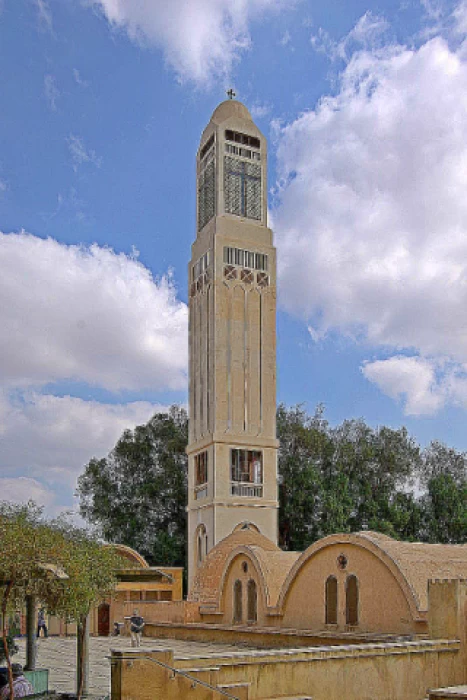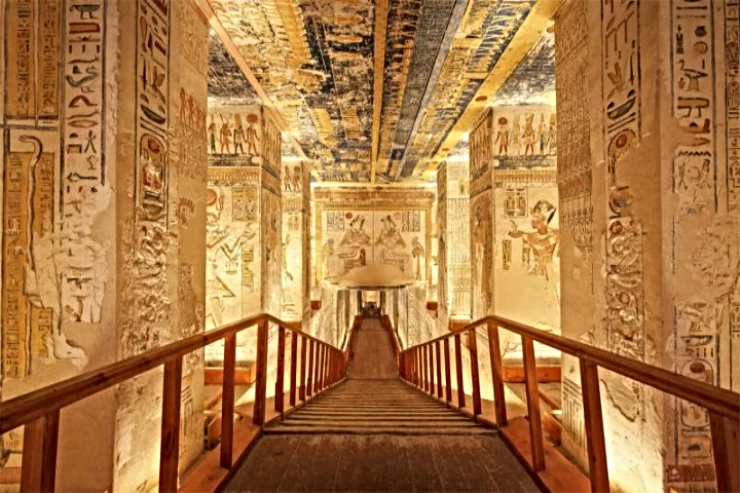
Monastery of the Great St. Makarios “Abu Makkar”
Monastery of the Great St. Makarios “Abu Makkar”
St. Macarius the Great has an important place in Coptic history; he is the founder of the monastic order in the wilderness of Shehit “Wadi al-Natrun”, which played an important role in the history of monasticism, whether in Egypt or the world; as for the reason why St. Macarius was nicknamed the Great; it is to distinguish him from two other saints known by the same name; namely St. Macarius of Alexandria “or Little”; and St. Macarius, Bishop of Adco; and the three together are known in Coptic history as “the three shrines of the saints”.
As for the date of death of St. Makarios, Bishop of Adco, it is 27 Baba according to the Coptic calendar “corresponding to November 7 according to the Gregorian calendar” and the date of death of St. Makarios of Alexandria is 6 Patience according to the Coptic calendar “corresponding to May 13 according to the Gregorian calendar”.
As for the life story of St. Makarios the Great, he was born in one of the countries of Menoufia Governorate in 301 AD from pious Christian parents; the father was a pious priest named Ibrahim; while his mother was a virtuous woman named Sarah; and it happened one night that thieves attacked their house One night, the Prophet Ibrahim appeared in a dream to his father to console him for what he had lost; he told him that his woman would conceive and give birth to a righteous and good son; he asked him to name him “Makar”, which means “happy” or “blessed” in Arabic.
When he grew up, his father wanted to marry him, and when Makarios heard about this, he strongly refused; he wanted to live a life of celibacy, but at the insistence of his parents, he finally gave in; but he vowed not to have sex with her, but to continue his work of transporting the natron to the town. He continued his work of transporting natron from the mountain to the town; and one night, while he was on Mount Natron, he became tired and fell asleep; and he saw in his dream the angel of the Lord coming to him; and he told him that God would give him this mountain to build it; and you will have many spiritual sons who will be devoted to the worship of God.
He then returned to his home in Menoufia to find his wife gravely ill; she soon died while still a pure virgin. He continued to care for his elderly parents until they died in good old age. Makarios decided to vow himself to monastic life after that; then the angel of the Lord appeared to him, reminding him of the vision he had seen on Mount Natron; so he went there and built himself a cave in the place where the monastery of Baramos is currently located.
During this period, he visited the great St. Anthony, the father of all monks, in his monastery in the Red Sea twice; the first time was in 343 AD, and the second time was in 352 AD. St. Anthony testified about his holiness and purity and said about him, “Great power comes out of these hands.”
As for Abu Makkar Monastery itself, most of its monks were renowned for being very knowledgeable, so much so that it was considered the legitimate heir of the Alexandria Theological School; this is also why Abu Makkar Monastery has produced the largest number of popes of the Coptic Orthodox Church.















